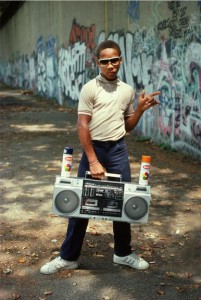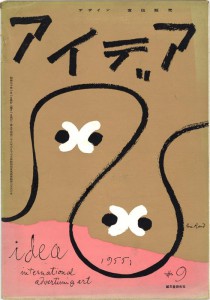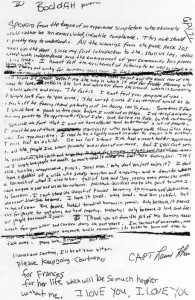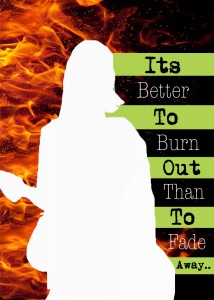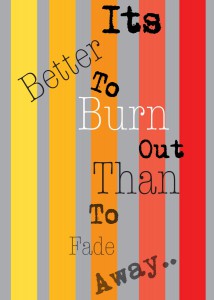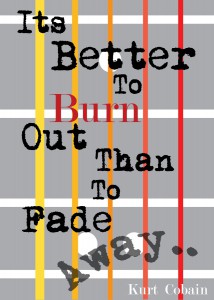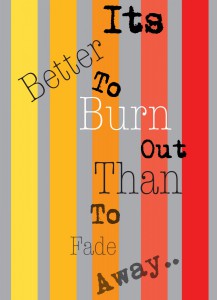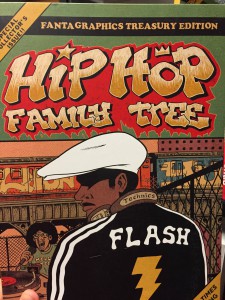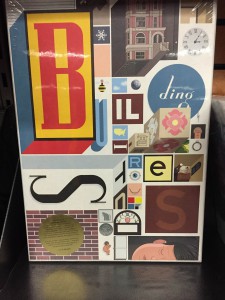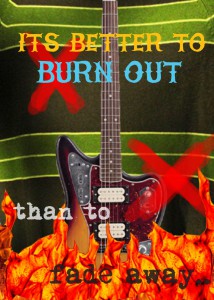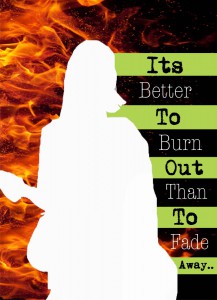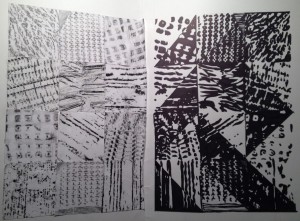The Museum of The City of New York is full of unique features such as decorative use of words in the staircase, or the lights that can be seen as a sculpture from an angle. Two current exhibitions that are worth a look at are the photographs of greats such as Janette Beckman, Joe Conzo, and Martha Cooper. While one floor below is a look at the legendary Paul Rand and his revolutionary designs and logos. An example of a great design Rand created was for the “Jazzways Magazine” volume 1 from 1946. A very simplistic layout as well as idea, he creates fun and imaginary imagery from just a variety of shapes. Triangles, circles, rectangles and others are used to make bodies and instruments used to play jazz music. By using the technique of minimalism he is able to attract an audience that enjoys the type of music, those are curious what the cover means and the major amount of red in the background can pop out in a rack full of mostly white covers. In the 1940s covers often were either black or white with just a pinch of color since the printing industry was still on its baby steps. By making the letters in the title lower case it can give a feeling of relaxation and the type face being a regular san serif, it welcomes anyone to pick the issue up. The issue was very well received and praised for the unique imagery that was not very common at the time and still being able to look attractive to those who aren’t very open minded.
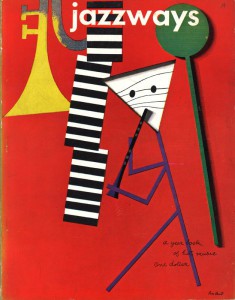
Photographer Martha Cooper was in charge to photograph brick dancer Little Crazy Legs. The stylistic shot was taken during the early stages of hip-hop music reaching the masses. She would take this photograph at Riverside Park, Manhattan in 1983, a huge area where many up and coming street artists would roam and the best of use of the surroundings. She took this to her advantage by having him stand in the middle with the effect of a long road behind him covered in colorful letters. A small but very effective trick she did here but having him perfectly positioned in the brightest section of the park. It’s all natural light and by not adding any extra light his skin and cloths are perfectly bright enough and makes him the main attraction with a great supporting backdrop.
Another well received magazine cover by Paul Rand is the one he created for “International Advertising Art Magazine” volume 2 from 1955. The piece, which is part of a private collection, is targeted towards the Japanese demographic. Using a mix of charcoal and paper he is able to create a simple yet diverse design and idea. A few swirls and words over a piece of ripped paper can make of people think and guess upon what is being seen in front of them. Around the time this cover was created, American audiences weren’t very open to other cultures nor were they willing to take the time to make up what these signs mean but he managed to make it a successful issue and was able to inspire an entire generation to be more open to new ideas and views.
Both artists have created memorable pieces whether through a camera lens or a piece of paper, to this day designers and photographers go back to see how things started and how they can influence the current generation of artists. The museum is a great stop on the list of museums located in New York City, and will inspire anyone who walks in at any day.

